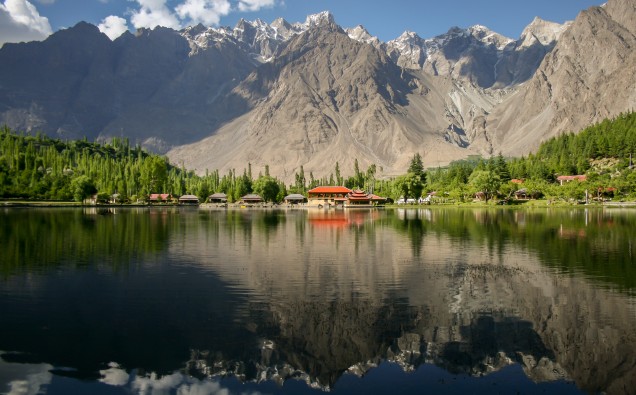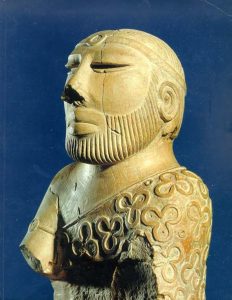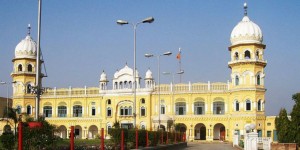
Featured Image: Shangrila Resort SkarduPhoto Credit: Zaeem Siddiq via Wikimedia Commons
Pakistan’s fabled northern parts are once again attracting tourists as the country achieves stability and development after years of security troubles.
Pakistan Tourism Development Corporation says the number of tourists visiting the country annually has surged to to 1.75 million – a much better number than it was a few years ago when militant insurgency in the tribal areas and terror attacks on cities hurt the country’s tourism industry.
But now with the country stepping its economic development with a network of infrastructure and modern means of communication, the country is poised to have its due share of international tourism.
Another good dimension is that Pakistan’s growing middle class is also invigorating the tourism scene with the latest yearly numbers of domestic tourists touching 38.3 million.
Pakistan has the world’s second highest mountain K2 and seven of the 14 tallest peaks, making its Himalayan region a big attraction for mountaineers.
But the northern areas with their breathtaking scenes and landscapes like Shangrila are only one part of Pakistan’s tourism picture. In recent years, religious and interfaith tourism has also seen a sudden rise in the country with Sikhs from neighboring India visiting their holy places in Nankana Saheb in large numbers.
Then there are several monuments and relics of ancient civilization that serve as a major pull for visitors like many enchanting symbols, arts, statues, pottery, and many other manifestations of the Indus valley civilization.
A Bloomberg report last week cited World Travel and Tourism Council as putting economic contribution of tourism to Pakistan’s economy at $19.4 billion, which could soar to $ 36.1 billion in a decade.
Meanwhile, the United Nations says generating $3.2 billion of spending worldwide every day, tourism creates one-tenth of jobs globally, represents 10 per cent of world’s gross domestic product (GDP) and is 30 per cent of world trade in services.
As the third largest export industry, travel and tourism fuel UN World Tourism Organization’s long-term forecasts showing that by 2030, the number of travellers will reach 1.8 billion, the world body says.
“But beyond the numbers and the economic benefits, travel and tourism is today a major contributor to a transformation that slowly and gradually is bringing us together, as humans, like never before, in a fast, globalized world,” says Taleb Rifai, Secretary-General of the UN World Tourism Organization.
Breaking down stereotypes and enabling people to celebrate rich cultural diversity, is “tourism’s greatest contribution to a better world,” according to Mr. Rifai.
“This year’s celebration comes at a very special time,” Rifai, Secretary-General of the UN World Tourism Organization (UNWTO) at the official UN celebration of the Day in Doha, Qatar, pointing out that 2017 is the UN International Year of Sustainable Tourism for Development.
“[It is] a once-in-a-lifetime opportunity to come together and promote travel and tourism, as one of the most effective transformative human forces of the 21st century,” he added.
Air transport and tourism, he stated are a force for development and have major responsibilities in building a better and more sustainable world.
“Both are interlinked, as over half of the people travelling the world today arrive to their destination by air, thus the economic impacts of tourism and aviation are linked.”
Acknowledging global challenges, such as climate change, migration and security, the UNWTO chief said, that 2016, 1,235 million travellers crossed international borders in one year.
That was almost one-sixth of the people of the world making an international trip every year, “and while doing so, tourism is bringing tremendous benefits to communities, economies and societies.”

















